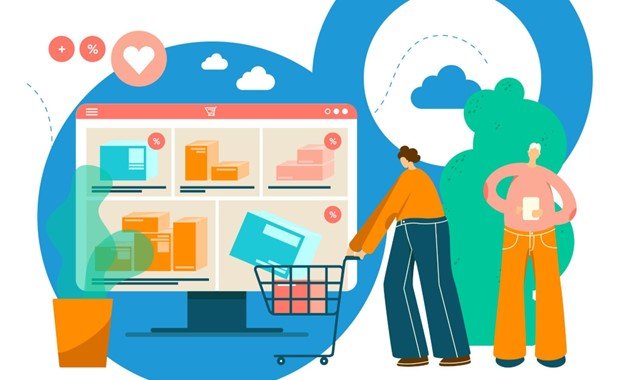Converting casual browsing into concrete purchases lies at the core of thriving e-commerce ventures. Achieving this goal necessitates delving into the intricate interplay of psychology, technology, and creativity that underpins customers’ online shopping behavior. Our aim in this blog is to unravel the intricate tapestry of Online customer behavior, uncovering the subtle drivers behind each click, content view, and preference. To harness the full potential of this behavior and enhance sales, e-commerce businesses must grasp the intricacies of consumer behavior in online shopping and employ effective strategies tailored to meet the evolving needs and preferences of their target audience.
Understanding Online Customer Behavior
Now, you may ask the question “what is online customer behavior?” It simply refers to the actions, preferences, and decision-making processes exhibited by individuals while engaging with e-commerce platforms. It encompasses various aspects, including browsing patterns, product preferences, purchasing habits, and response to marketing stimuli. In essence, it encapsulates the entire journey of a customer from initial exploration to final purchase and beyond.
Factors Influencing Consumer Behavior In Online Shopping
According to studies outlined on UXPressia, there are several factors influencing consumer behavior in online shopping. These factors include:
- Convenience and Accessibility
Consumers are drawn to e-commerce platforms that offer seamless navigation, intuitive interfaces, and hassle-free transactions. Websites like Primarc Pecan, with their user-friendly design and responsive layout, exemplify this principle, making it effortless for customers to explore products and make purchases.
- Product Presentation and Descriptions
High-quality images, detailed product descriptions, and informative content play a pivotal role in influencing purchase decisions. By providing comprehensive information about their offerings, businesses can instil confidence in potential buyers and encourage conversions.
- Social Proof and Reviews
Testimonials, ratings, and reviews from other customers significantly impact purchasing behavior. Positive feedback fosters trust and credibility, assuring prospective buyers of the product’s quality and value.
- Personalisation
Tailoring the shopping experience based on individual preferences and past interactions can enhance engagement and foster customer loyalty. Utilising data analytics and AI-driven algorithms, e-commerce platforms can deliver personalised recommendations and targeted promotions, thereby increasing the likelihood of conversion.
Strategies to Leverage Online Shopping Behavior for Increased Sales
To capitalise on customers’ online shopping behavior and drive sales, there are a few ecommerce marketing services that businesses can implement. The following are some of the strategies:
- Data Analytics and Insights
Leveraging advanced analytics tools, businesses can gain valuable insights into customer behavior, such as browsing patterns, purchase history, and demographic information. By analysing this data, they can identify trends, anticipate customer needs, and tailor their marketing efforts accordingly.
- Optimised User Experience
Investing in website optimization and user experience enhancements can streamline the shopping process and minimise friction points. From simplified navigation to fast-loading pages, every aspect of the online journey should be optimised to provide a seamless and enjoyable experience for customers.
- Targeted Marketing Campaigns
Segmenting the target audience based on demographic, behavioral, and psychographic factors allows businesses to craft targeted marketing campaigns that resonate with specific customer segments. Whether through email marketing, social media advertising, or content marketing, personalised messaging can effectively influence purchasing behavior.
- Incentives and Rewards
Offering incentives such as discounts, promotions, and loyalty rewards can incentivize customers to make a purchase and foster repeat business. By tapping into the psychological principle of reciprocity, businesses can create a sense of value and appreciation, thereby increasing customer retention and lifetime value.
- Ongoing Engagement and Support
The customer journey extends beyond the point of purchase, and maintaining ongoing engagement is crucial for building long-term relationships. Providing exceptional customer support, proactive communication, and post-purchase follow-ups can enhance satisfaction and encourage advocacy, ultimately driving future sales.
Conclusion
In conclusion, harnessing the power of customers’ online shopping behavior is essential for e-commerce businesses looking to thrive in today’s competitive market landscape. By understanding the factors influencing consumer behavior in online shopping and implementing strategic initiatives to leverage this knowledge, businesses can effectively boost sales, enhance customer satisfaction, and achieve sustainable growth in the digital realm. With a commitment to delivering exceptional user experiences and personalised interactions, e-commerce entities can position themselves for success in the ever-evolving world of online retail.
